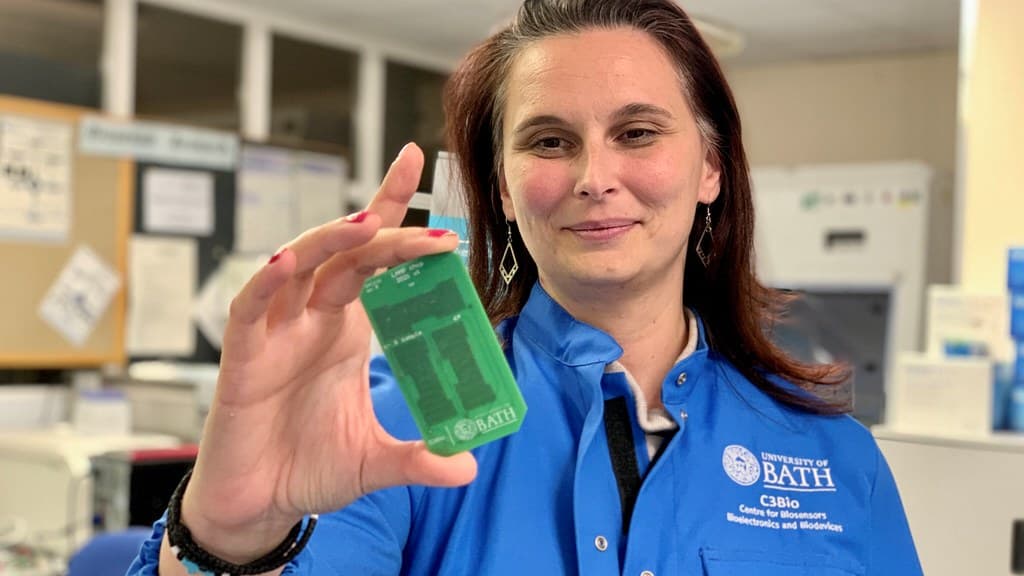Engineers at the University of Bath have created a virus diagnosis device that gives lab-quality results in just three minutes. The LoCKAmp, as they called it, uses lab-on-chip technology and has been proven to provide fast and low-cost detection of Covid-19 from nasal swabs. It could be adapted to detect other pathogens such as bacteria.

The device functions by rapidly releasing and enhancing genetic material from a nasal swab specimen through a chemical reaction, ultimately generating a result that can be accessed via a smartphone app. Unlike lateral flow assay tests, the LoCKAmp uses the same genetic-based testing techniques previously reserved for lab-based PCR tests.
As well as being accurate, the test is also remarkably fast, delivering results within three minutes — the fastest Covid-19 test reported to date, as the researchers describe it. They created a prototype using off-the-shelf components and factory-manufactured printed circuit boards and argue it could be soon made on a mass scale and at low cost.
They are already in conversation with academic and commercial partners to bring LoCKAmp into production. The device is projected to cost about $60 when it reaches mass production, while the test cartridges, now made for $3, could cost less than $0.60. The device and how it works is detailed in a paper in the journal Lab on a Chip.
“This is an amazing display of the possibilities of lab-on-a-chip technology, and given the low cost and adaptability of the technology to detect a range of conditions, a potentially highly valuable and unique tool for a range of healthcare settings,” Despina Moschou, the study lead researcher at Bath University, said in a news release.
How LoCKAmp works
The LoCKAmp system utilizes a technique called RT-LAMP (reverse transcription loop-mediated isothermal amplification) to amplify targeted RNA sequences, enabling rapid and precise identification of the specific virus of interest. The researchers argue that LAMP detection surpasses PCR testing in terms of sensitivity, speed, and specificity.
Processing occurs at a constant temperature of 65 degrees Celsius, eliminating the need for the multiple thermal cycles essential in a PCR testing. This enables the device to be designed with a portable size and reduced power consumption. Additionally, the design offers the advantage of not requiring any pre-processing of nasal swab samples.
After the nasal swab sample is introduced in the device, LoCKAmp pumps the liquid through small transparent ‘microfluidic’ channels integrated into the circuit board, positioned above copper heaters. These heat the sample and release the RNA genetic material from the virus. This is then heated again and treated with RT-LAMP chemicals.
The device fluoresces under light if the viral RNA is present in the amplified sample, meaning the test is positive. The researchers tested it with Covid-19 patient swabs collected by Bath’s Royal United Hospital Trusts during the pandemic. Development of LoCKAmp continued since then, considering the significant potential of the device.
As well as testing it with nasal swap samples, the researchers believe the device could be used to do community-level monitoring and detection of viruses like Covid-19 by testing wastewater. This would allow us to quickly detect the spread of viruses and would give a community-wide view, rather than relying on individuals to regularly do a test.
“With LoCKAmp technology providing both low cost and real time genetic target identification and quantification, we’re getting ever closer to real time pathogen tracking. This opens exciting opportunities enabling the establishment of early warning systems,” Barbara Kasprzyk-Hordern, study author, said in a press release.









